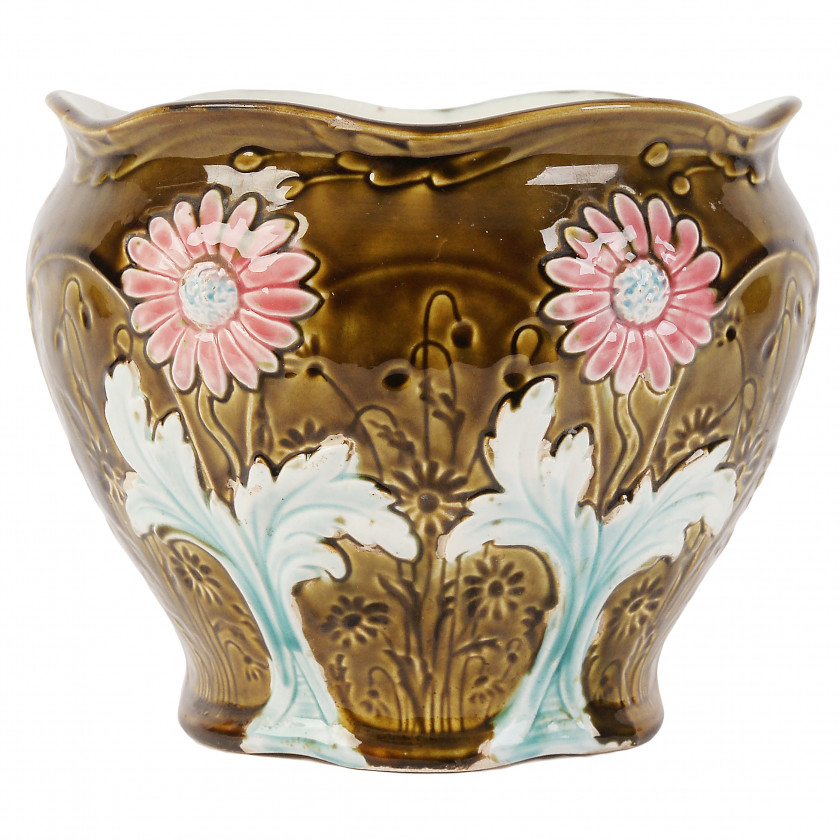Faience flower pot
-
340.00 EUR
Artist/Maker: Gustave De Bruyn
Artist/Maker Dates: 1864 - 1962
Place of Production: France, Fives-Lille
Date of Production: end of 19th - beg. of 20th century
Materials: faience, underglaze hand painting
Style: Art Nouveau
Height: 17.0 cm.
Condition:
Condition notes: Wear consistent with age and use
Description
Antonio Gustave De Bruyn was born to a family of three generations of
potters at Louvain in francophone Belgium, Gustave de Bruyn established a
kiln at nearby Lille in France when he was 24. Originally located in
the Lille neighborhood known as Petite Belgique. The de Bruyn pottery
moved to the Fives-Lille quarter in 1864 and remained there for nearly a
century, growing into a factory with some 300 workers. At first, the de
Bruyn works made simple throwaway wares such as clay pipes, then
expanded to include simple tablewares, and by 1887 began producing
luxury goods such as richly decorated flower vases and jardinières. In
1889. the Universal Exhibition in Paris awarded de Bruyn a silver medal
for art pottery. De Bruyn's commercial success attracted popular Nouveau
artists such as Réné Lalique and Louis Majorelle to design avant-garde
pieces for him. In 1917, a year after Gustave's death, in the depths of
the devastation of northern France and Belgium by the First World War,
the factory at Fives-Lille burned. Re-opened in the mid-1920s, the
factory at Fives-Lille produced trendy Art Deco pieces for about a
decade until closed again by the Depression.
The factory was sold in
1950 and briefly went back into production before closing permanently in
1962. Gustave de Bruyn is notable for patenting a method for glazing
earthenware without the use of lead, in 1885, at a time when the health
risks of lead-based glazes were beginning to emerge as a public concern.
The de Bruyn factory also trained many important early French and
Belgian Art Deco ceramicists, among them Louis Dage.
Shipping details
- Log in to see the cost for shipping this lot to your address.
Shipping methods are determined by item size, type, fragility and specific characteristics.
Shipping costs are calculated based on carrier rates, delivery distance and packing complexity.
Payment details
Doma Antikvariāts accepts the following payment methods:






